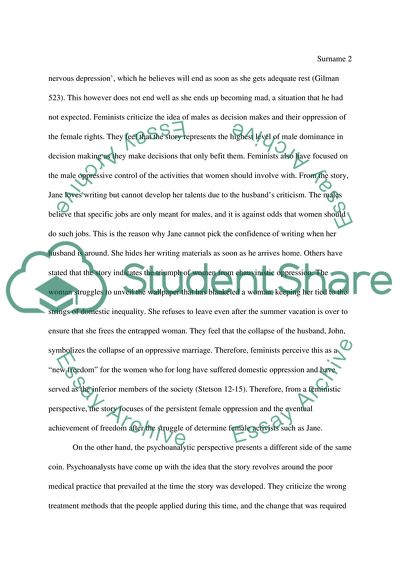Cite this document
(Analysis of The Yellow Wallpaper by Charlotte Perkins Gilman Book Report/Review - 6, n.d.)
Analysis of The Yellow Wallpaper by Charlotte Perkins Gilman Book Report/Review - 6. https://studentshare.org/literature/1830103-the-yellow-wallpaper-by-charlotte-perkins-gilman
Analysis of The Yellow Wallpaper by Charlotte Perkins Gilman Book Report/Review - 6. https://studentshare.org/literature/1830103-the-yellow-wallpaper-by-charlotte-perkins-gilman
(Analysis of The Yellow Wallpaper by Charlotte Perkins Gilman Book Report/Review - 6)
Analysis of The Yellow Wallpaper by Charlotte Perkins Gilman Book Report/Review - 6. https://studentshare.org/literature/1830103-the-yellow-wallpaper-by-charlotte-perkins-gilman.
Analysis of The Yellow Wallpaper by Charlotte Perkins Gilman Book Report/Review - 6. https://studentshare.org/literature/1830103-the-yellow-wallpaper-by-charlotte-perkins-gilman.
“Analysis of The Yellow Wallpaper by Charlotte Perkins Gilman Book Report/Review - 6”. https://studentshare.org/literature/1830103-the-yellow-wallpaper-by-charlotte-perkins-gilman.


